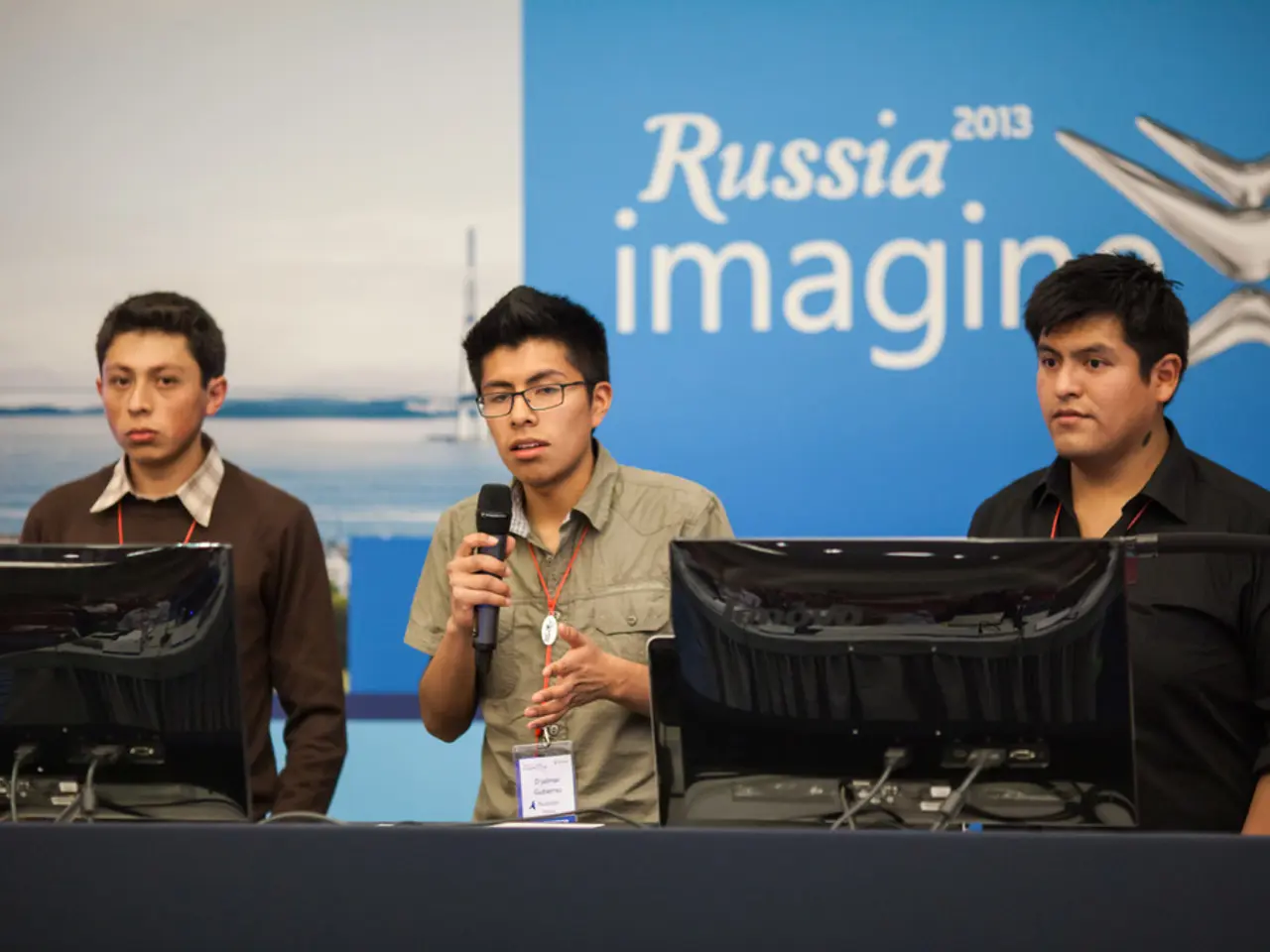Dangerous AI Manifestations: Deepfakes Leading to Identity Fraud and Deception Scams
In the rapidly evolving digital landscape, businesses are facing a new challenge: deepfake technology. This advanced form of artificial intelligence (AI) can create highly realistic videos, images, and even voices, posing a significant risk to organisations of all sizes.
Recent incidents have highlighted the potential dangers. In February 2024, a finance worker at a multinational firm transferred $25 million to fraudsters using deepfake technology. The fraud began with a seemingly legitimate message from the company's UK-based Chief Financial Officer (CFO), who requested a secret transaction. The CFO, however, was an artificially created deepfake.
Similarly, in July 2024, a person hired as a Principal Software Engineer by cybersecurity firm KnowBe4 was discovered to be a North Korean state actor. The rogue employee attempted to install information-stealing malware, aiming to extract sensitive data from the company's systems.
The Hong Kong police have reported that fraudsters used stolen identity cards and deepfake technology to trick facial recognition systems. This underscores the need for both individuals and organisations to adapt their defenses as deepfake technology and AI-assisted impersonation become more advanced.
To combat these threats, businesses can mitigate risks by adopting a multi-layered approach. This includes leveraging AI-driven security tools for advanced biometric authentication methods, such as facial recognition with liveness detection and continuous identity verification. These tools can identify anomalies humans may miss and verify the authenticity of live capture sources.
Implementing layered risk signals is another crucial strategy. By combining biometric checks with real-time assessment of passive signals like device reputation, email and phone number legitimacy, and PII verification, businesses can increase visibility into potential fraud attempts without disrupting user experience.
Comprehensive employee training and awareness is also vital. Educating staff across the organisation, especially those handling sensitive communications and financial operations, to recognise, report, and respond appropriately to suspicious interactions can reduce operational vulnerabilities to synthetic reality attacks.
Establishing clear internal governance and auditing is another important step. Developing formal policies and regular audits for the creation, dissemination, and detection of AI-generated content ensures ethical standards, compliance, and effective risk management.
Staying updated on evolving external regulations is also essential. Monitoring and adapting to legal frameworks concerning AI and deepfakes, and incorporating compliance into corporate security protocols, can reduce legal exposures.
Deploying network segmentation and infrastructure hardening can also help. Running AI systems on dedicated, restricted networks can minimise attack surfaces and isolate potential breaches driven by generative AI misuse.
Adopting authenticity verification standards, such as content credential frameworks, can help build trust and detect manipulated content before harm occurs. Combining technological and human content review can supplement detection algorithms, while recognising scalability challenges and the limitations of detection tools in keeping pace with evolving deepfake capabilities.
A secure onboarding process can be maintained by using sandbox environments to isolate new hires' initial activities from critical systems and ensuring that external devices are not used remotely during onboarding.
In conclusion, businesses must foster a culture of vigilance to better protect against the dangers posed by increasingly realistic and deceptive technologies like deepfakes. Advanced monitoring systems should be deployed to detect unusual activities or discrepancies in system access patterns. Full mitigation remains challenging given rapid deepfake advancements, requiring ongoing investment, vigilance, and adaptation.
- The rising threat of deepfake technology, a form of artificial intelligence, has become a significant concern for businesses in the digital landscape, as it can create highly realistic videos, images, and voices, potentially leading to fraud.
- Infamously, in February 2024, a finance worker at a multinational firm lost $25 million to fraudsters, who used deepfake technology to pose as the UK-based Chief Financial Officer.
- Similarly, in July 2024, a Principal Software Engineer hired by a cybersecurity firm, KnowBe4, was revealed to be a North Korean state actor, aiming to extract sensitive data through information-stealing malware.
- In response to these threats, businesses can implement a multi-layered approach to security, using AI-driven security tools for advanced biometric authentication methods, such as facial recognition with liveness detection and continuous identity verification.
- To further bolster security, it's crucial to implement layered risk signals, combining biometric checks with real-time assessment of passive signals like device reputation, email and phone number legitimacy, and PII verification.
- Comprehensive employee training and awareness is also vital, educating staff on recognising, reporting, and responding appropriately to suspicious interactions, thereby reducing operational vulnerabilities to synthetic reality attacks.




